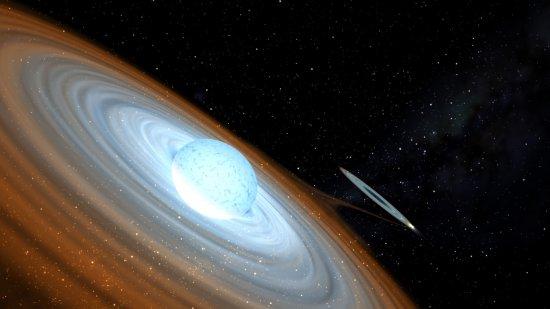It may interest you
-
 The Instituto de Astrofísica de Canarias (IAC) has successfully completed the integration of the scientific detector into the FRIDA (inFRared Imager and Dissector for Adaptive Optics) instrument, an integra-field camera and spectrograph designed to work with the adaptive optics system of the Gran Telescopio Canarias (GTC or Grantecan), the world's largest optical and infrared telescope, located at the Roque de los Muchachos Observatory in La Palma. The integration was carried out in the laboratories of the National Autonomous University of Mexico (UNAM) in Mexico City by a team from the IACAdvertised on
The Instituto de Astrofísica de Canarias (IAC) has successfully completed the integration of the scientific detector into the FRIDA (inFRared Imager and Dissector for Adaptive Optics) instrument, an integra-field camera and spectrograph designed to work with the adaptive optics system of the Gran Telescopio Canarias (GTC or Grantecan), the world's largest optical and infrared telescope, located at the Roque de los Muchachos Observatory in La Palma. The integration was carried out in the laboratories of the National Autonomous University of Mexico (UNAM) in Mexico City by a team from the IACAdvertised on -
 From today until 5 December 2025, the Instituto de Astrofísica de Canarias (IAC) is hosting the SO/PHI Science and Team Meetings, an international gathering focused on the scientific and technical advances of the Polarimetric and Helioseismic Imager (PHI) instrument aboard ESA's Solar Orbiter (SO) space mission. The development of PHI was co-led by the Spanish Space Solar Physics Consortium (S3PC), which also currently coordinates its scientific operation and exploitation. The IAC is part of this network. PHI is a high-precision solar observation instrument equipped with two telescopes—oneAdvertised on
From today until 5 December 2025, the Instituto de Astrofísica de Canarias (IAC) is hosting the SO/PHI Science and Team Meetings, an international gathering focused on the scientific and technical advances of the Polarimetric and Helioseismic Imager (PHI) instrument aboard ESA's Solar Orbiter (SO) space mission. The development of PHI was co-led by the Spanish Space Solar Physics Consortium (S3PC), which also currently coordinates its scientific operation and exploitation. The IAC is part of this network. PHI is a high-precision solar observation instrument equipped with two telescopes—oneAdvertised on -
 La casa de control de los telescopios MAGIC , en el Observatorio del Roque de los Muchachos (ORM), en La Palma, luce desde hoy una nueva imagen, la del “Enano Estelar”, en homenaje a una de las figuras más queridas de las Fiestas Lustrales de la Bajada de la Virgen de las Nieves . La intervención artística, promovida por la colaboración científica MAGIC, ha sido presentada en un acto institucional que ha reunido a autoridades locales, representantes del mundo científico y medios de comunicación. La transformación del edificio —cuya singular cubierta, obra del arquitecto José Luis PortaAdvertised on
La casa de control de los telescopios MAGIC , en el Observatorio del Roque de los Muchachos (ORM), en La Palma, luce desde hoy una nueva imagen, la del “Enano Estelar”, en homenaje a una de las figuras más queridas de las Fiestas Lustrales de la Bajada de la Virgen de las Nieves . La intervención artística, promovida por la colaboración científica MAGIC, ha sido presentada en un acto institucional que ha reunido a autoridades locales, representantes del mundo científico y medios de comunicación. La transformación del edificio —cuya singular cubierta, obra del arquitecto José Luis PortaAdvertised on
